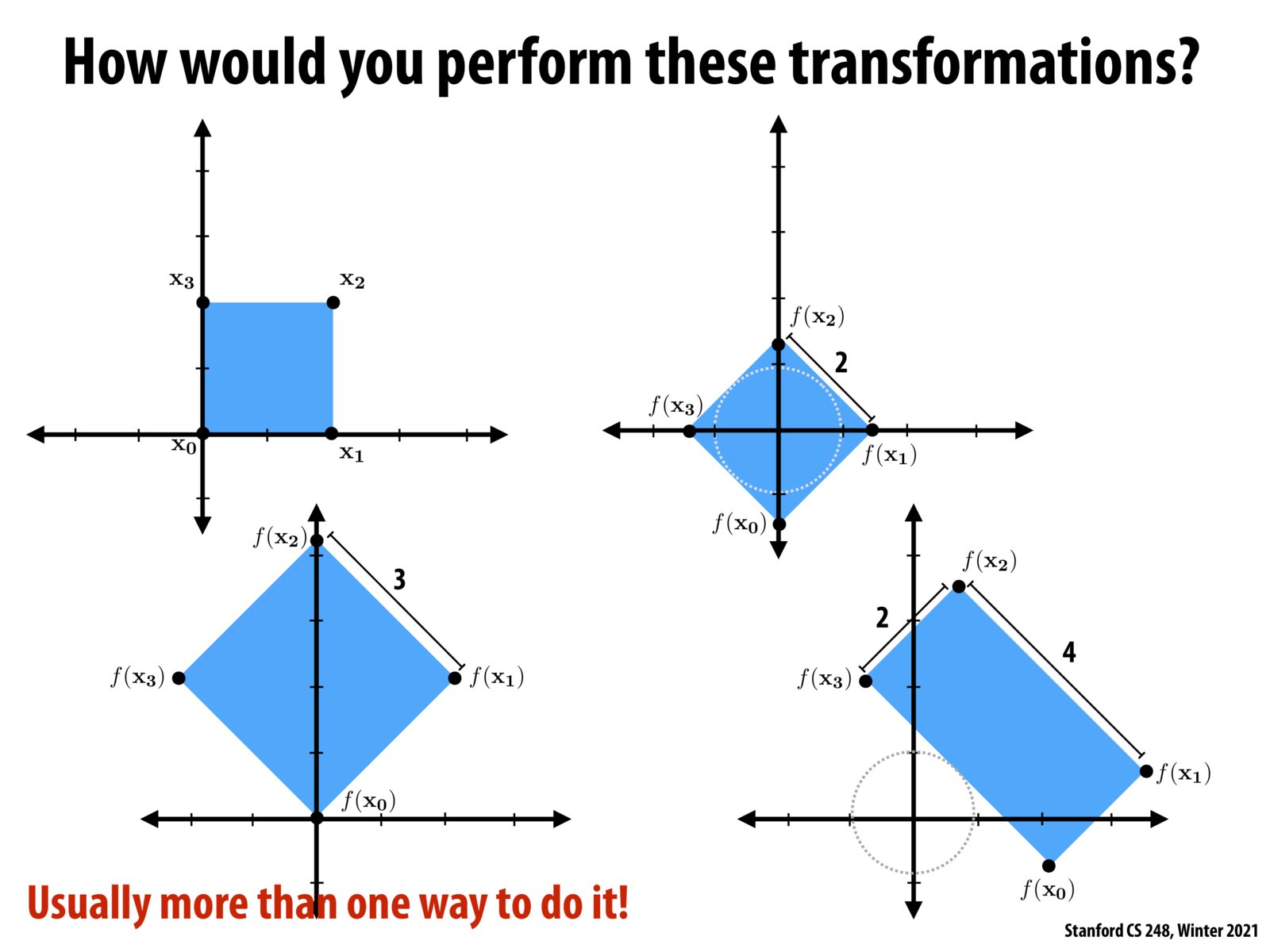


Is there more than one way to get to the bottom right picture from the top right one, using just the tools we learned in lecture today?

Top right: Translation by (-1,-1) + Rotation by 45 Bottom left: Scale x1.5 + Rotation by 45 Bottom right: Scale x2 in x + Translation in x and y + Rotation by 45
Alternate ways are possible.

For clarification, what does it mean to "scale n times in x" or "scale n times in y"?
@tarajones99 I believe you can get to the same result as "Scale x2 in x + Translation in x and y + Rotation by 45" (from tce) by "scale x2 in y (however you would do horizontal stretch) + translation left and up + rotation 45 degrees clockwise"

If one wanted to be efficient, would there ever be a scenario where the same linear transformation is repeated twice?

One idea for getting to the bottom right image by keeping proportional dimensions would be to copy the original image and stack it on the top edge of itself

Given an initial and a final picture, is there a systematical way to figure out the intermediate matrices required for the transformation?

@liangcyn If we do scaling by 2 along the y axis (horizontal stretch) + translation + rotation, we can get the correct shape for the final results, but the mapped points are not the same as what's shown in the bottom right image.

@tsk At least analytically, I'm thinking even finding the final matrix required for the transformation is unclear; there might be multiple matrices that result in the same transform. However, if we were given the final matrix, one possible way is to do matrix decomposition. The resulting matrices might not make sense though in terms of transformations that intuitively make sense.

I keep thinking of achieve the bottom right one without non-uniform scale, but it seems that there isn't a way to do so. Open to any comments!

@jestinm, wouldn't we be able to create the matrix for each individual matrix? Or am I misunderstanding what you're saying?

I am not sure if I am right. But I think it is difficult to find the result if the shape is not at the origin. For the fourth one, I would first do scaling along the y-axis, so we have the same shape. Then rotate around the origin. Finally, we move the origin (bottom-left corner) to f(x0).
Please log in to leave a comment.
What are the final transformation matrices multiplied out?